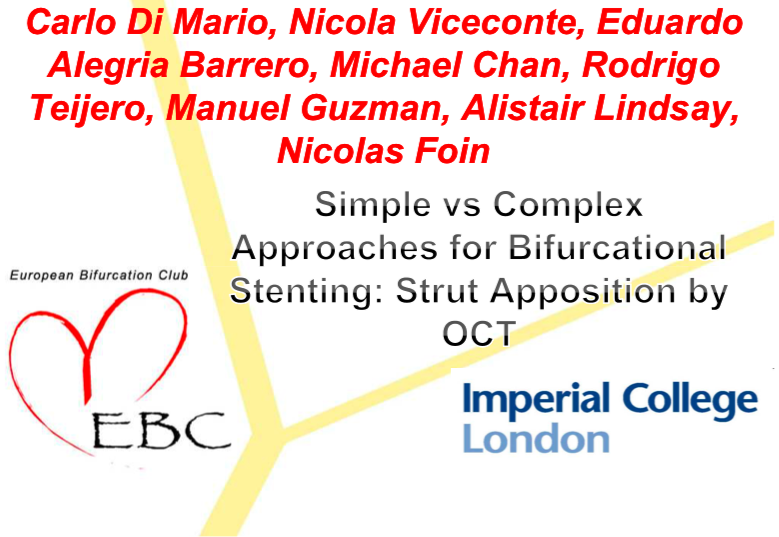EBC - ON DEMAND
Simple vs complex approaches for bifurcation stenting strut apposition by OCT
European Bifurcation Club 2011, EBC 2011 – Lisbon, Portugal
OCT Session
Simple vs complex approaches for bifurcation stenting strut apposition by OCT
Author: Carlo Di Mario, MD, Imperial College London, UK
CONCLUSION
- Malapposition in bifurcational stenting is very frequent in the quadrants facing the origin of the side-branch
- Lesions treated with 2 Stents have more frequent strut malapposition than lesions treated with 1 stent with a significant difference in the proximal segment and in the quadrants opposite to SB opening
- Lesions treated with 1 Stent also have very frequent malapposition and the clinical significance of the difference with 2 stents is difficult to explore in a small series
- Clinical outcome was not influenced by the presence/severity of malapposition
LIMITATIONS
- Lesions treated with 2 Stents have worse baseline characteristics including more severe and longer SB stenoses
- Lesions treated with 2 Stents have larger SB diameter, with greater potential for malapposition.
- Only two techniques of double stenting assessed
- Analysis limited only to main vessel
- OCT used as documentary final imaging and not for procedural guidance

